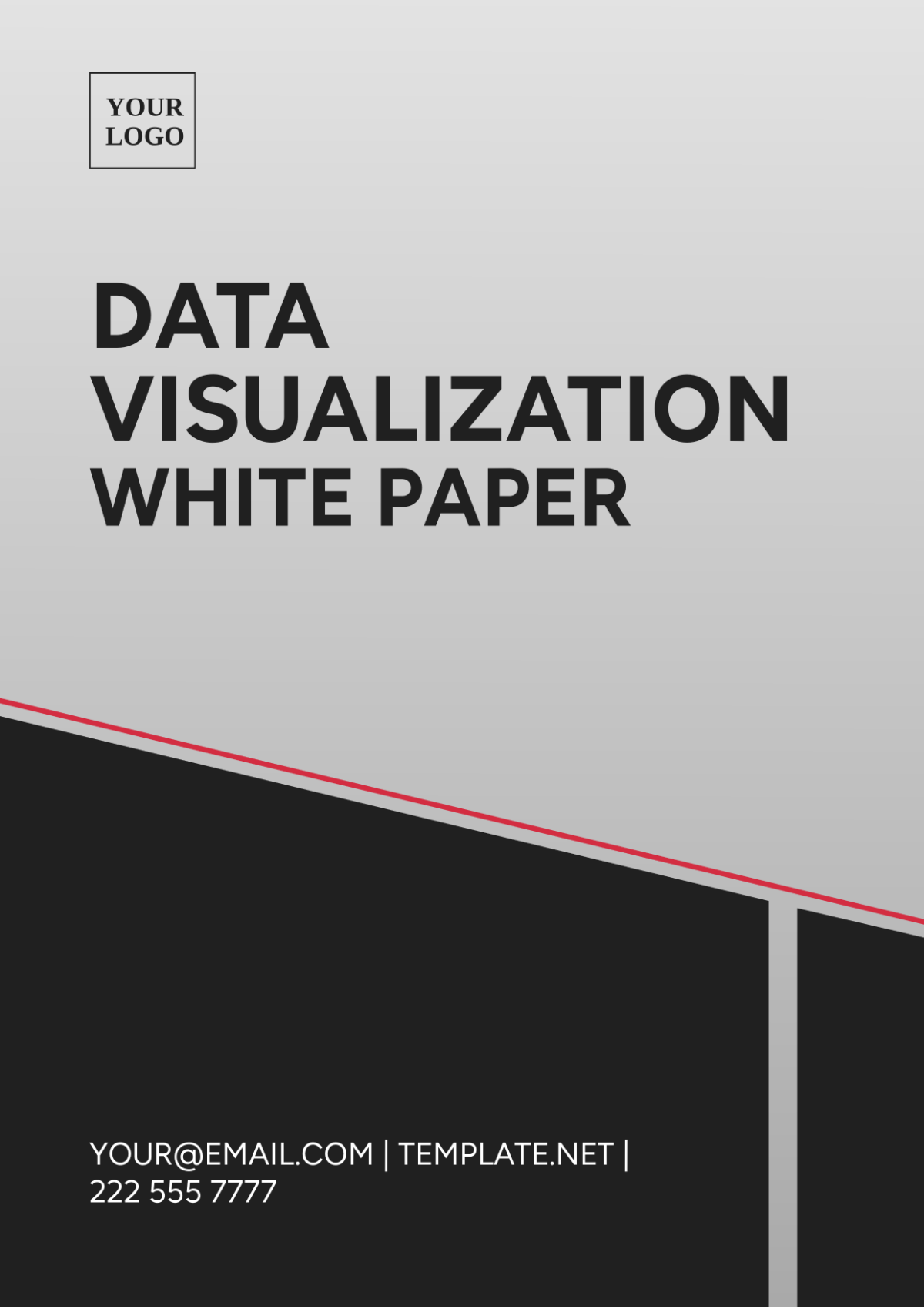Data Visualization White Paper
Harnessing the Power of Data Visualization to Drive Business Insights
Prepared by: [YOUR NAME]
Company: [YOUR COMPANY NAME]
Department: [YOUR DEPARTMENT]
Date: [DATE
I. Executive Summary

In this section, [Your Company Name] presents a comprehensive exploration of the significance of data visualization in modern business practices. We highlight the transformative potential of visual storytelling in unlocking valuable insights from complex datasets, ultimately driving informed decision-making and organizational success.
II. Introduction
[Your Company Name] is at the forefront of data-driven innovation, empowering businesses to harness the power of data visualization for strategic advantage. In this introductory section, we delve into the evolving landscape of data analytics and the pivotal role that effective visualization plays in transforming raw data into actionable insights.
III. The Power of Visuals in Data Interpretation
Visual representation serves as a powerful tool for understanding and interpreting vast quantities of data. Through intuitive charts, graphs, and dashboards, [Your Company Name] facilitates meaningful exploration of data, enabling stakeholders to uncover trends, patterns, and correlations with ease.
IV. Key Benefits of Data Visualization
Unlocking insights through visual storytelling offers a myriad of benefits, including:
Enhanced understanding of market dynamics and consumer behavior
Improved decision-making through data-driven insights
Streamlined communication across departments and stakeholders
Increased agility in responding to changing business conditions
V. Types of Data Visualization Techniques
Bar Charts: Ideal for comparing categorical data or tracking changes over time.
Pie Charts: Effective for illustrating proportions and distributions within a dataset.
Line Graphs: Useful for showcasing trends and relationships between variables.
Heat Maps: Highlight spatial patterns and density within datasets.
Scatter Plots: Visualize correlations between two variables.
Histograms: Display frequency distributions of continuous data.
VI. Best Practices for Effective Data Visualization
To maximize the impact of data visualization, adhere to these best practices:
Tailor visualizations to the audience and intended message.
Use colors strategically to emphasize key insights without overwhelming the viewer.
Ensure clarity and simplicity in design to facilitate comprehension.
Incorporate interactivity where possible to encourage exploration and engagement.
VII. Case Studies
Explore real-world examples of organizations that have leveraged [Your Company Name]'s data visualization solutions to drive success:
Retail Analytics: Visualizing sales data to optimize inventory management and identify customer preferences.
Healthcare Insights: Analyzing patient outcomes through interactive dashboards to improve clinical decision-making.
Financial Forecasting: Utilizing predictive analytics to guide strategic investments and risk management strategies.
VIII. Conclusion
In conclusion, the transformative power of data visualization cannot be overstated. By harnessing visual storytelling techniques, businesses can unlock valuable insights, drive innovation, and stay ahead of the competition in today's data-driven world.

IX. About [Your Company Name]
[Your Company Name] is a leading provider of data analytics and visualization solutions, dedicated to empowering organizations with actionable insights for informed decision-making. With a proven track record of innovation and excellence, we are committed to driving success for our clients across industries.
White Paper Templates @ Template.net
































